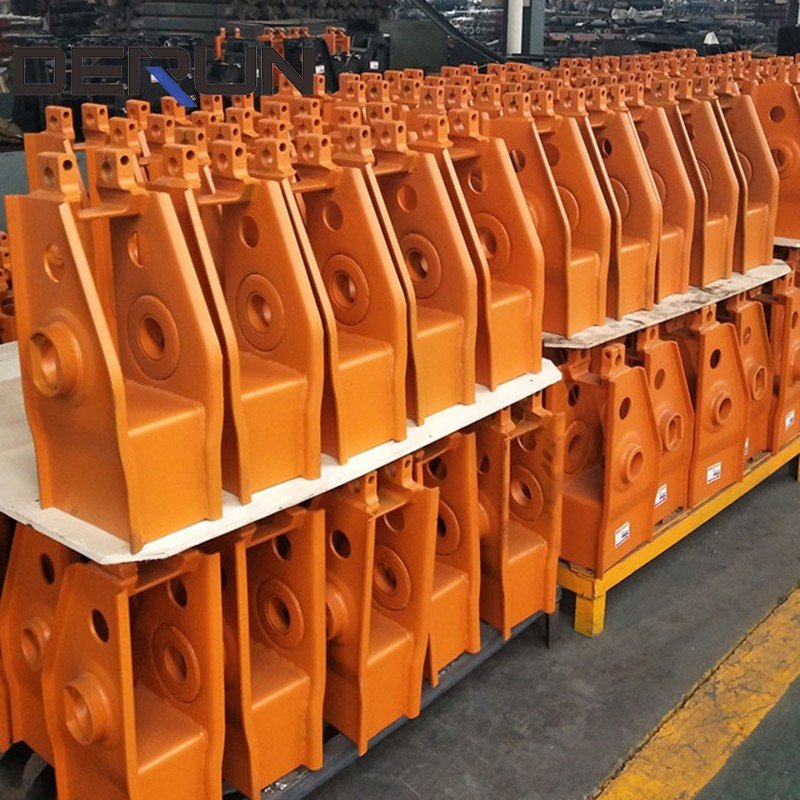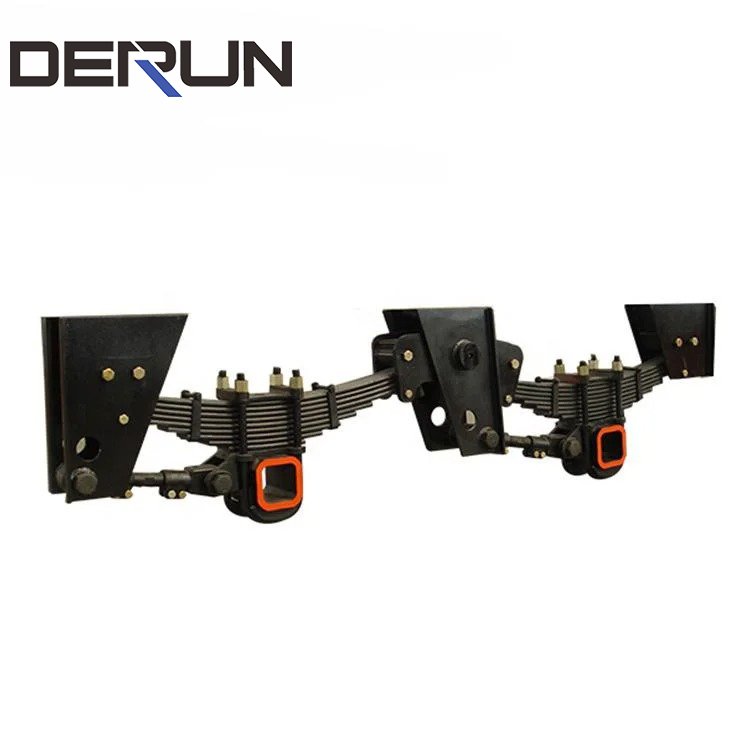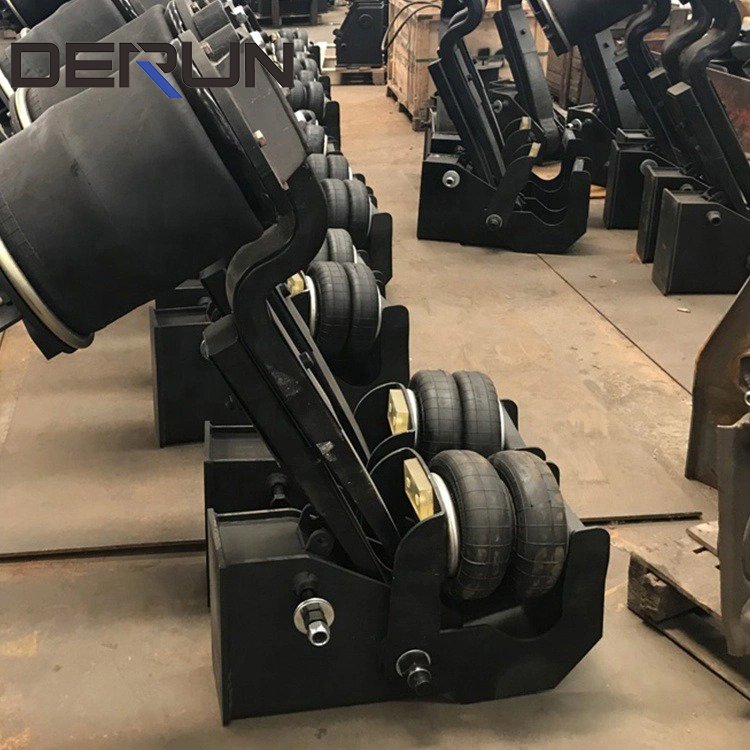American suspension, German suspension and air suspension are three different types of vehicle suspension systems, each of which has unique characteristics and application scenarios. The following is a detailed comparison of these three suspension systems:
I. American Suspension
Structural characteristics:
The guide arm is welded from multiple steel plates and usually has an ‘I-beam’ design.
The front bracket is relatively small.
The contact area between the arm and the axle is larger, providing better lateral support.
Performance Characteristics:
Suitable for vehicles with light loads.
Lower cost and simple structure.
But the stiffness is larger, the smoothness is relatively poor, easy to produce motion interference.

Second, the German suspension (European suspension)
Structural features:
The guide arm is one or more leaf springs, directly forged and shaped.
The shape of the guide arm can be bent to provide longer airbag travel.
Performance characteristics:
Better load bearing performance, suitable for vehicles with larger load capacity.
Excellent damping performance and better adaptability to road conditions.
Widely used in Europe and other complex road conditions, transport bias heavy load areas.

Third, air suspension
Structural features:
The core components include air compressor, air storage tank, control unit, suspension airbags and so on.
Through the air pressure generated by the air compressor, the air pressure is transmitted to the suspension airbag, thus changing the body height and vehicle attitude.
Performance features:
Wide adaptability: body height and stiffness can be adjusted according to different road conditions and driving modes.
Good comfort: through the automatic levelling function, the body stays level and reduces bumps.
Strong load-carrying capacity: it can withstand large loads and is suitable for vehicles of different weights and qualities.
High degree of intelligence: with a variety of sensors and control systems, it can monitor and adjust the vehicle status in real time.
High safety: improves vehicle manoeuvrability and stability and reduces the risk of accidents.

IV. Summary
Applicable scenarios:
American suspension: suitable for vehicles with light load and certain requirements on cost.
German suspension: suitable for vehicles with larger load capacity and higher requirements for road condition adaptability.
Air suspension: widely used in various models, especially high-end models in pursuit of comfort, stability and intelligence.
Suggestions for selection:
When choosing a suspension system, comprehensive consideration should be made based on the specific purpose of the vehicle, load capacity, road conditions and individual needs for comfort and handling.
Each suspension system has its own unique advantages and applicable scenarios, and there are no absolute advantages or disadvantages.
To sum up, American suspension, German suspension and air suspension have their own characteristics and application scenarios. When choosing, the specific needs of the vehicle and personal driving habits should be fully considered in order to select the most suitable suspension system.




